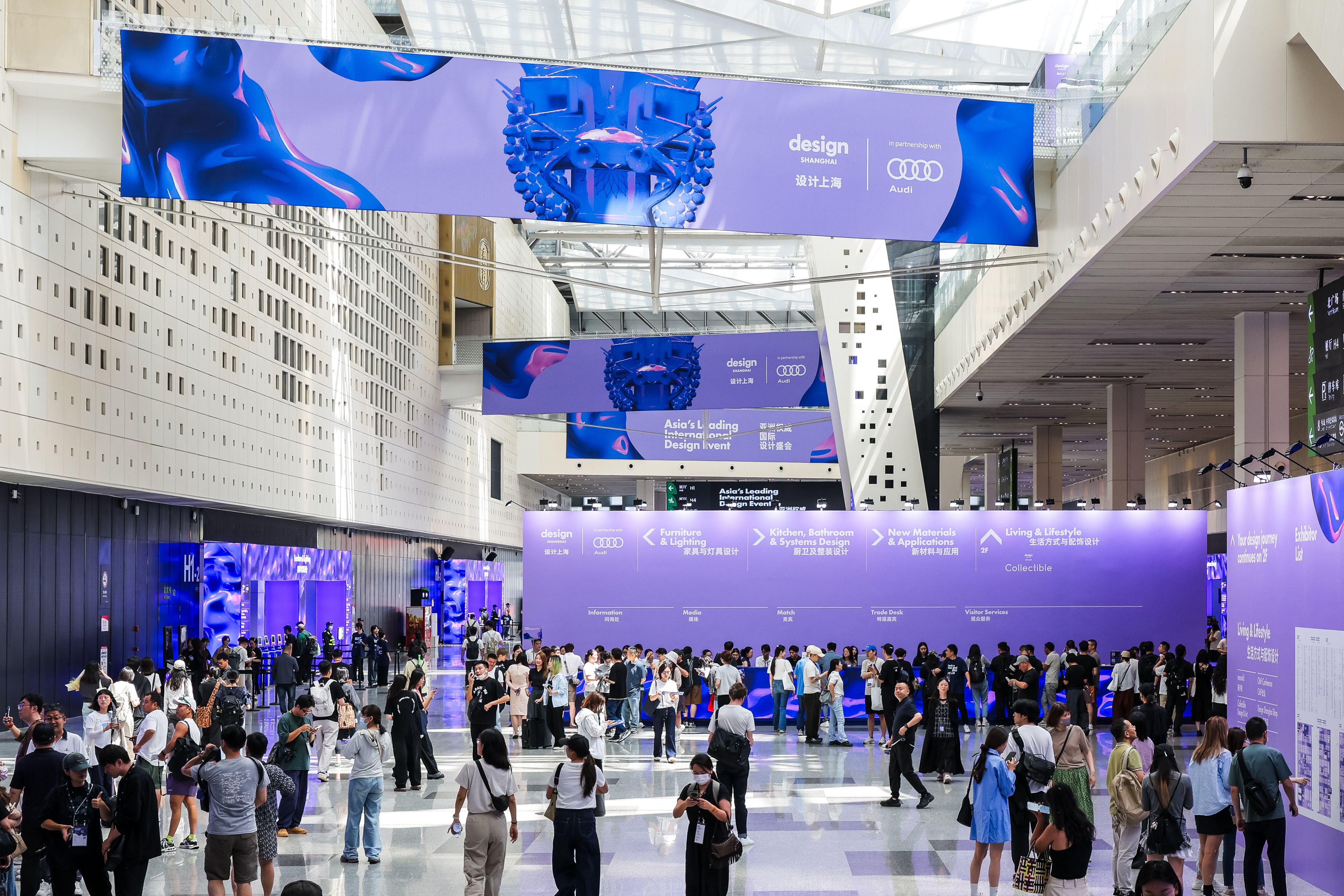Design Shanghai 2025: Shaping a future where design meets humanity
)
The 12th edition of Design Shanghai, Asia's leading international design event, has concluded at the Shanghai World Expo Exhibition & Convention Center.
At the heart of this year's edition was the resonant theme: "Design for Humanity." Exploring how design can meaningfully serve human life and society, the theme infused the entire event—from exhibitions and special projects to keynote forums and material showcases.
With over 76,000 visitors, the fair reaffirmed its position as a global crossroads of creativity, innovation, and cultural dialogue.
Reflecting a growing consumer focus on value and longevity in design, the 2025 edition of Design Shanghai welcomed over 600 brands from across 30+ countries, showcasing new collections and product launches.
The fair also unveiled Collectible Design and Art: a new platform showcasing limited-edition artworks and design pieces from across the globe. Curated in collaboration with leading galleries, artists, and designers, the initiative highlighted a significant shift in taste and priorities among Chinese audiences.
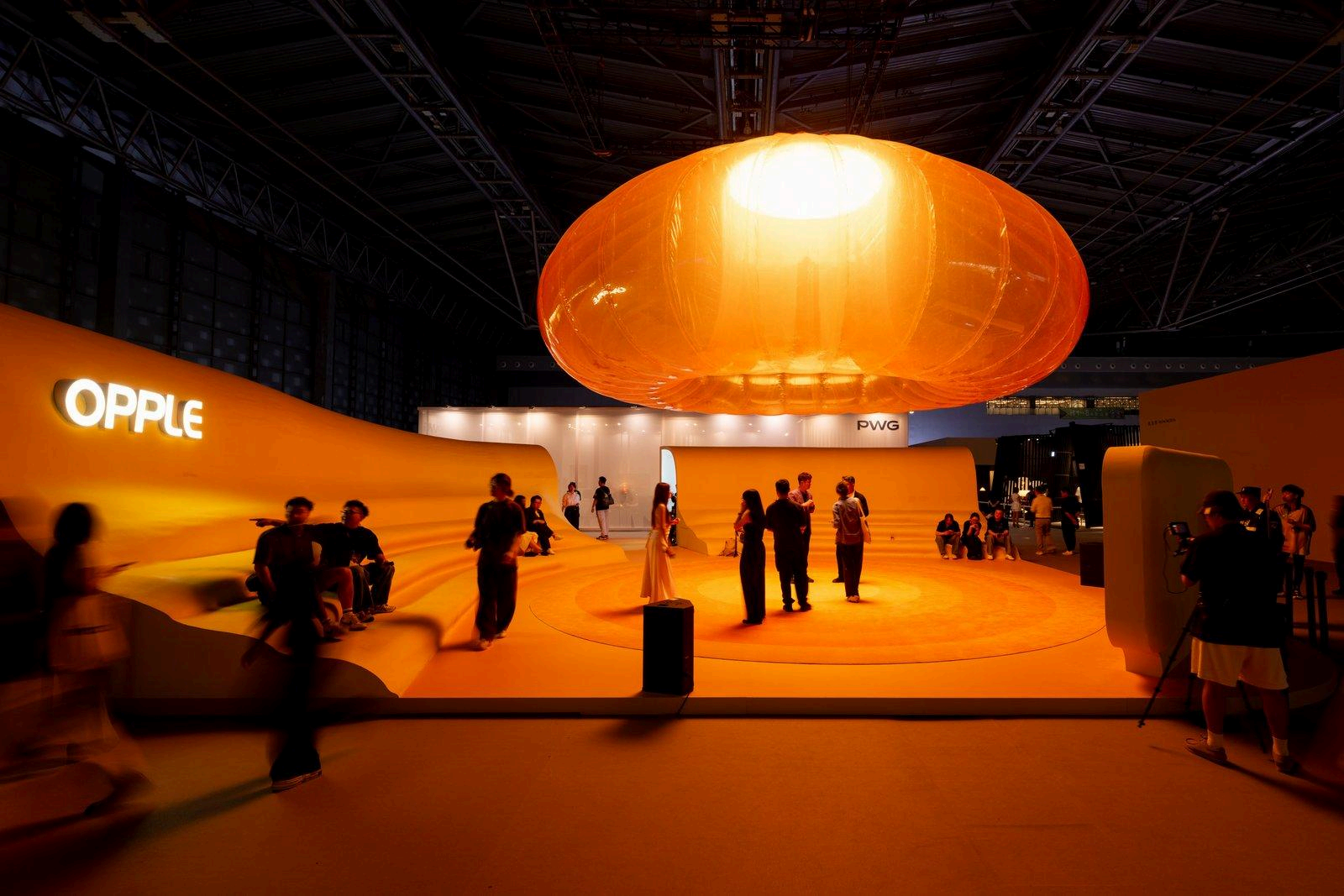
Design for Humanity
More than just a conceptual thread, the fair explored how design can shape the human experience by addressing urgent issues such as sustainability, health, and community, while bridging tradition and modernity.
"At Design Shanghai 2025, 'Design for Humanity' was not just a theme—it became a shared mission. From sustainability to emotional wellbeing, the event showed how design can actively respond to the complex challenges of our time. It reminded us that truly meaningful design must begin and end with people." — Zhuo Tan, Event Director, Design Shanghai.
SUSTAINABILITY
Emphasizing circularity and performance, the fair highlighted the role of design in environmental preservation.
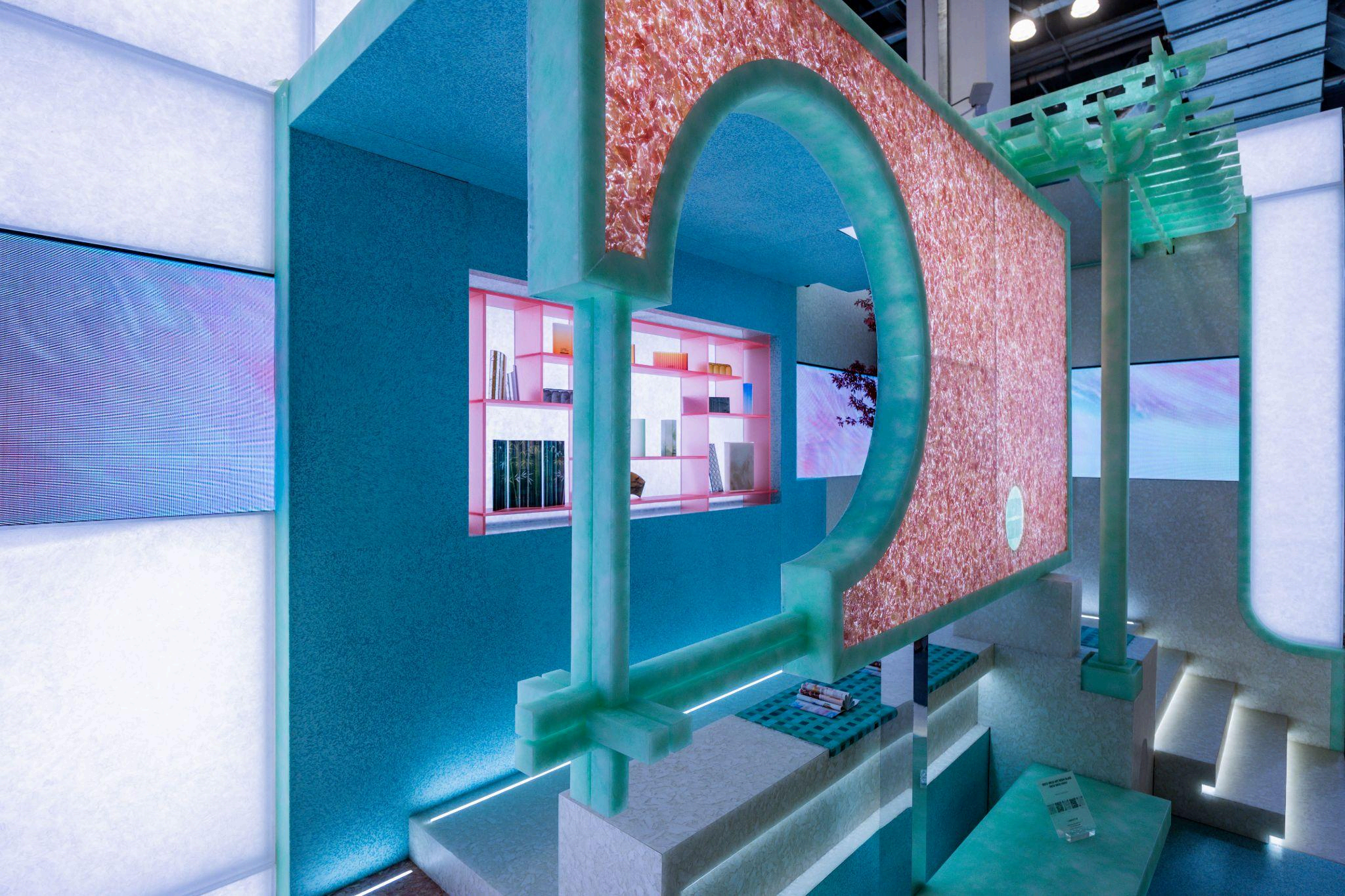
The New Materials & Applications section featured brands and designers that are pushing boundaries with sustainable textiles and recycled materials. Exhibitors included Ultrasuede® (Japan), Florim (Italy), and Mapei (Italy), all demonstrating the latest in sustainable surfaces and finishes.
The Re:Materialize feature, curated by Zhang Lei and Lu Jingyi from Rong Design Library, raised awareness on global environmental instability through material-driven design, inviting designers to use innovative materials to offer new forms of security and connection. Materials First, curated by Chris Lefteri, encouraged engagement with the next generation ofmaterials, blending science, sustainability, and artistry through an immersive installation.
CONFRONT CONFLICT
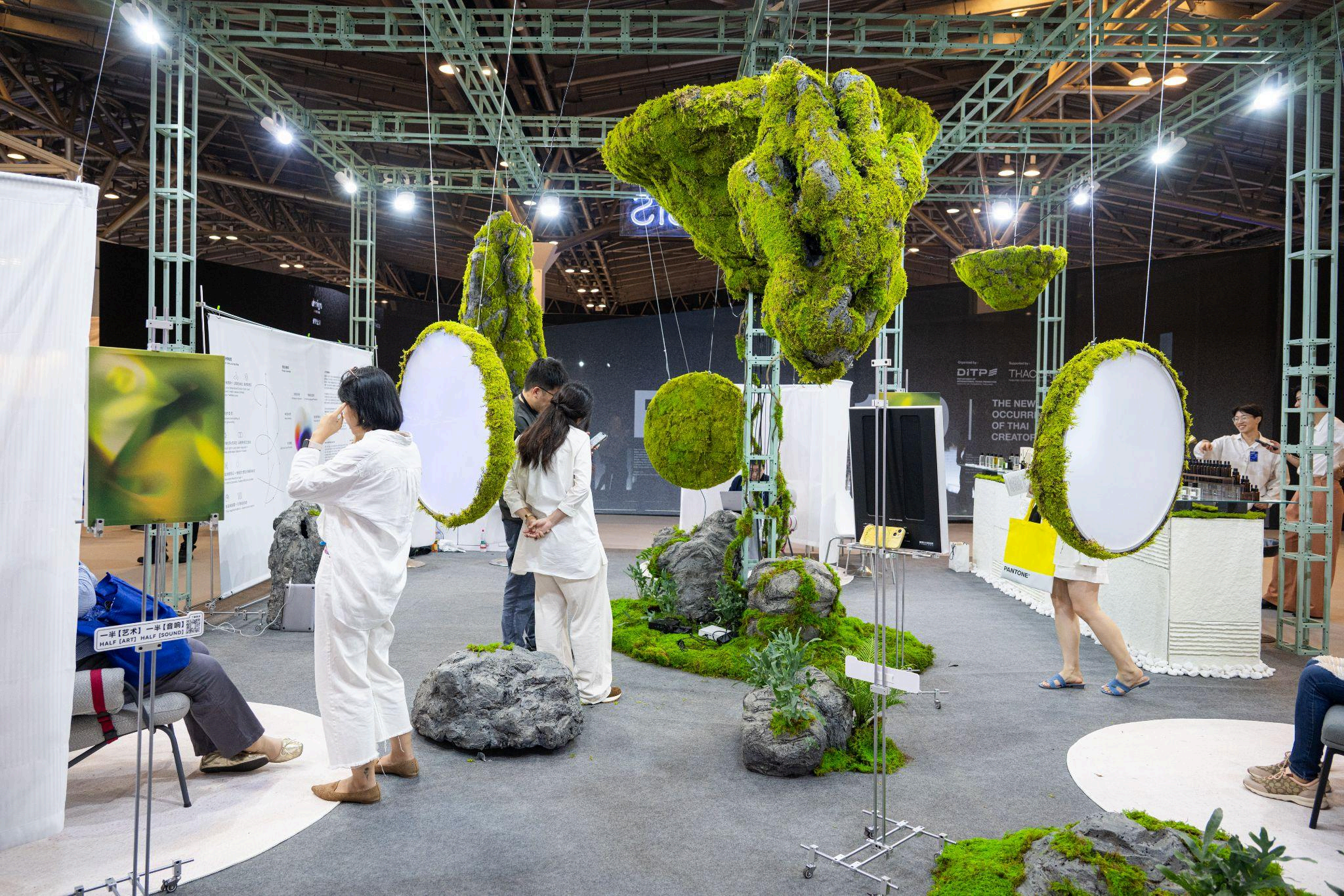
The Future Emotional Refuge is the first immersive emotional interface launched by Inoasis (UK), integrating brainwave technology with artistic experience. By collecting real-time EEG and language data, the device detects users'emotional states and responds through light, sound, and spatial resonance. Grounded in research across neuroscience, clinical psychology, and ecological design, this "Mindflow" device envisions a future mode of emotional inhabitation.
"The Big Idea: Human vs Machine Creativity"
Design Shanghai 2025 Global Design Conference Schedule hosted a high-profile panel to tackle one of the most pressing issues in the creative industries: the future of human creativity in the age of AI. Speakers explored how rapidly technology is reshaping ideation, the distinct value of human insight, and the ethical tensions between innovation and authorship. Speakers included: Iris Pan (Amazon XR & AI Shopping Design), Mo Zheng (AntiStatics), Craig Miller (Heatherwick Studio), Siu Tang (The Orangeblowfish), and Budiman Ong (Jia CURATED), moderated by Aidan Walker.
TALENTS - Empowering the Next Generation of Designers Amid a World of Conflict
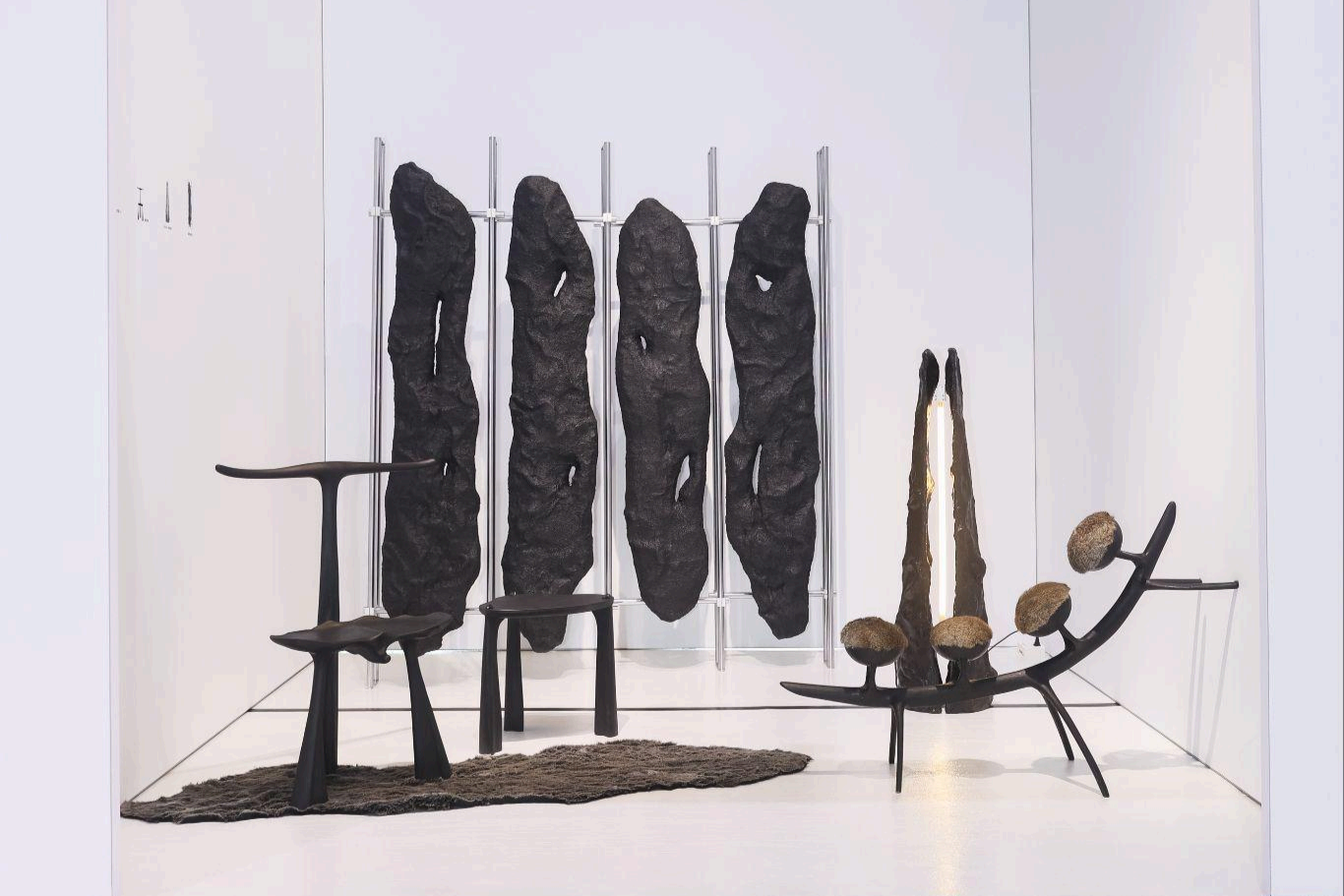
Founded in 2020 by Design Shanghai, TALENTS has rapidly emerged as a leading platform spotlighting young Chinese and international design voices and providing a critical stage for creative self-expression, exploration, and evolution. In 2025, as the world faces unprecedented volatility across economics, politics, technology, and humanity, this year's theme, "Confront Conflicts", asks: How should designers respond to a future defined by tension and uncertainty? Each project stands as a unique response to this year's theme, reflecting deeply personal and critical perspectives on conflict.
Rong Table by Bingqing Studio (China) draws inspiration from ice to emphasise the connection between ecological crisis and craft heritage. By fusing Longquan celadon with contemporary forms, the work reflects the visual traces of glacial retreat while referencing traditional ceramic techniques such as exposed clay body and reserved porcelain whiteness.
Lunar Gleam is the debut product series by Studio RE+N (China) which explores the extension of architectural language, structural logic, and spatial storytelling at an everyday scale. Users can freely assemble it into standalone lamps or expand it into larger, self-supporting spatial installations, extending the potential of lighting as an architectural element. The series utilizes recycled aluminum and 3D-printed PLA/PETG materials, reflecting a commitment to sustainable design. Studio RE+N is an interdisciplinary, research-driven design practice founded by architects with academic backgrounds from Harvard University and Tsinghua University.
Award winners include Abid Javed (UK) for his Objets Mito, a sculptural biomorphic ceramic vessel collection inspired by the concept of biological “cargoes” and Masaya Kawamoto Design (Japan) won the Best Commercial Product Design.
TRADITION AND MODERNITY
The intersection of tradition and modernity was a major theme in 2025. Multiple curated features highlighted craft not just as a technique, but as a response to complexity and global uncertainty.
The Made in Jingdezhen feature symbolises the convergence of diverse crafts in the region. Historically, Jingdezhen has been the ceramics capital of the world and is now a creative hub where many talents have relocated to form a rich community of craft and design. Participating brands and artists included Moonline, POT, Ciireals, borges, Correct vs Incorrect, Zing Space, and Studio Bay.
As part of the conference programme, Yutaka Terasaki (Partner & General Manager at Kengo Kuma and Associates) gave a talk on one of their most emblematic projects in China: the UCCA Clay Museum. Paying tribute to Yixing’s ceramic legacy, the museum sits on the site of former pottery factories and ateliers, once the heart of Yixing's ceramic production. The project supports the area's wider redevelopment master plan, reimagining it as a cultural hub for ceramics — complete with workshops and studios — while preserving the historical architecture of its industrial past.
Design Shanghai and Chen Min invited visitors to rediscover the beauty of handcrafted art in today's fast-paced world with the sixth edition of neooold. Under the theme "Mass Wonders," the exhibition showcased the work of 20 young Chinese artisans specializing in traditional crafts such as lacquer, ceramics, metalwork, and weaving.
At Collectible Design and Art, 20 participating galleries featured works across painting, sculpture, collectible design, art installation, and jewellery. Highlights included Li Yan Xun’s (China) "Wood No.5" series of ceramic side tables inspired by tree stumps. The vibrant bark texture is achieved through the pâte-sur-pâte technique. Expanding on his father’s innovations in fencai (overglaze enamel), he dedicated nearly a decade to researching traditional glaze techniques from the Ming and Qing dynasties in the Jingdezhen region. This work resulted in the development of Yan Cai, a new range of colors and application methods that merge centuries-old craftsmanship with contemporary experimentation. Chengyan Lacquerware Studio (China) presented the Practicality cups, crafted using xipi lacquer, a traditional Chinese technique requiring over 70 precise steps, including successive layers of lacquering, grinding, polishing, and burnishing. The resulting surface is richly layered and fluid, evoking the movement of drifting clouds.
Audi partnered with acclaimed Chinese designer Frank Chou to present The Living Space: an immersive installation merging automotive design with contemporary living. Centered around the Audi A5L, the project embodied the brand’s vision of form, function, and lifestyle integration. The collaboration underscores Audi’s commitment to pushing creative boundaries and driving design innovation that inspires well beyond the road.
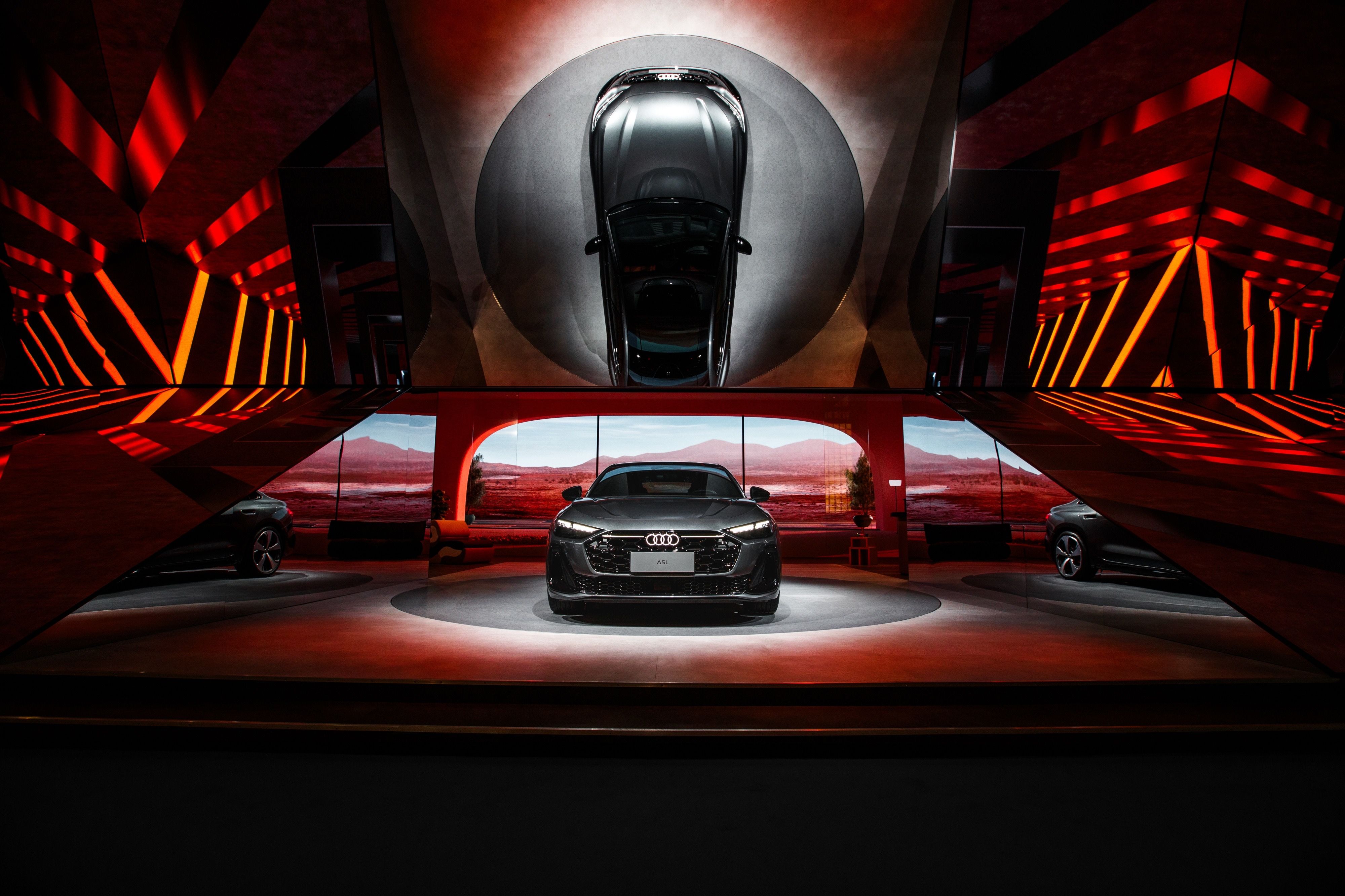
CULTURAL RESONANCE
The "East meets West" design narrative at Design Shanghai 2025 is fundamentally important as it embodies the event’s core mission of bridging cultural differences and fostering a global dialogue between Eastern and Western design philosophies. Over its 12-year history, Design Shanghai has established itself as a vital platform for fostering this dialogue, showcasing the best of international, Asia Pacific and local Chinese creativity side by side.
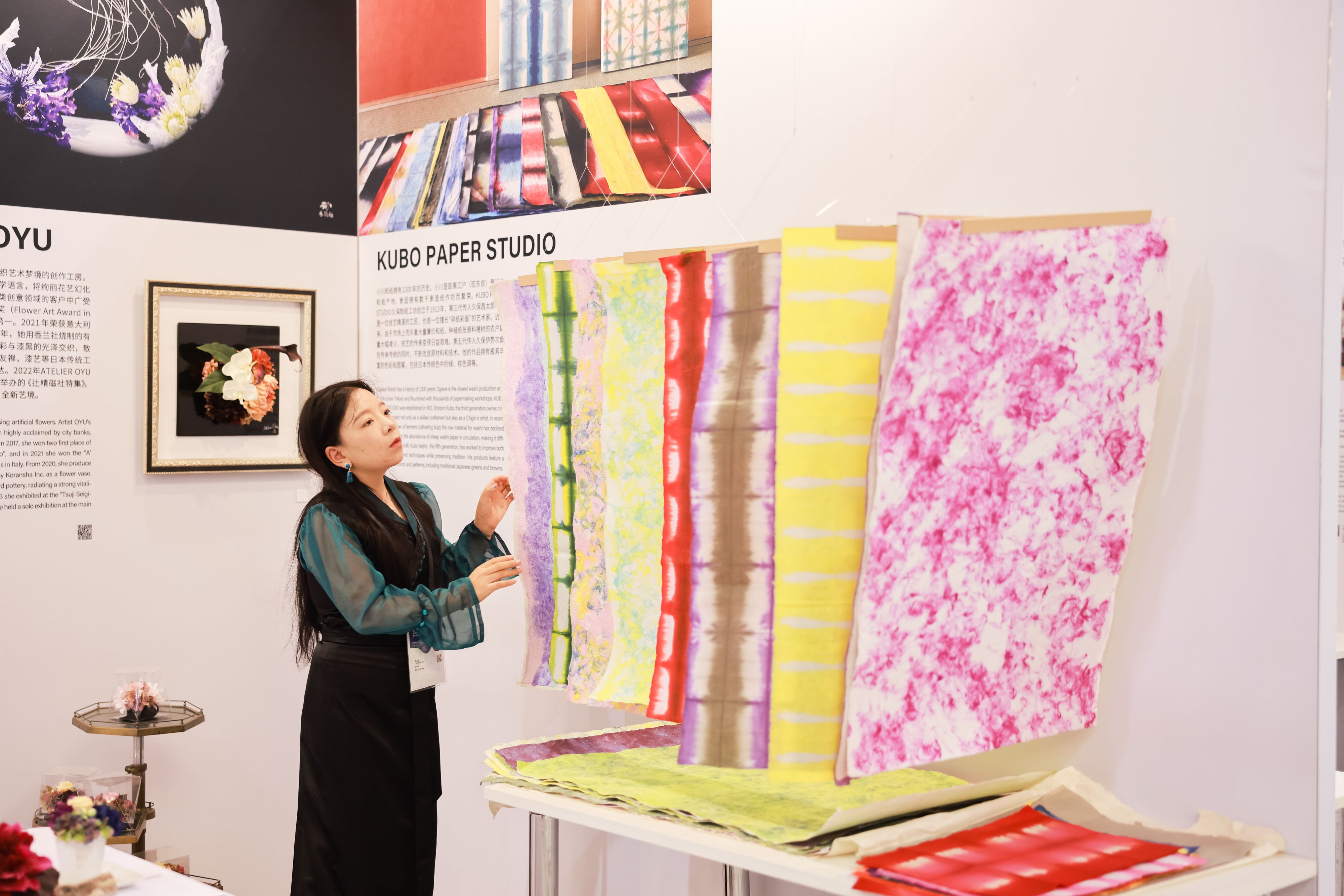
The exhibition Beyond Craft Japan fosters meaningful cultural exchange between Japanese and Chinese creators. It seeks to engage architects, interior designers, industry professionals, and creatives in a dialogue that traces the deep-rooted cultural heritage of both nations, while examining the richness and innovation of Japanese design. By investigating the aesthetic convergences and divergences between the two cultures, and emphasizing Japan’s use of natural materials and traditional craftsmanship, Beyond Craft Japan aspires to generate new avenues for cultural and creative collaboration.
HEALTH & COMMUNITY
This year’s programming expanded the notion of wellbeing beyond comfort—into emotional care, psychological balance, and multi-sensory experience.
The Design for Wellbeing Conference brought together leading experts from architecture, design, real estate, healthcare, furniture, and materials to explore creating livable lifestyles and a harmonious workplace ecology. Over three days, participants discussed innovative ways to reshape the relationship between people and their environment, while prominent brands showcased cutting-edge wellbeing solutions.
The programme included a presentation by Stefano Tronci, Asia Pacific Sustainability Lead at Skidmore, Owings & Merill. He illustrated how workplace design has evolved to become more people-centric, sustainable, and socially driven. Drawing on case studies from China and the Asia Pacific, Stefano Tronci, highlighted emerging trends that are reshaping office environments, placing greater focus on wellbeing, resilience, and community.
COLLECTIONS AND PRODUCT LAUNCHES
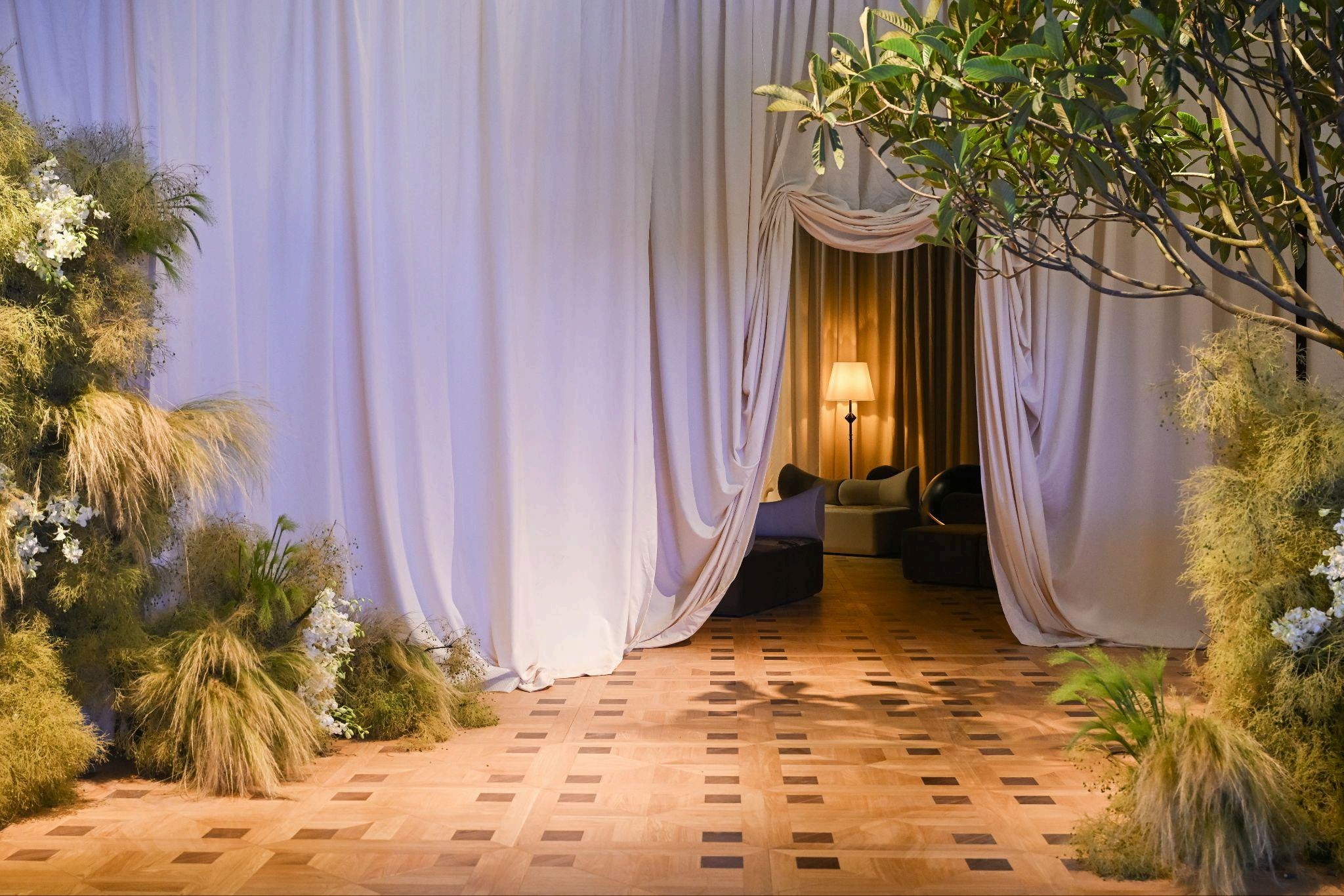
The Furniture & Lighting section featured global heritage brands and contemporary design. International names such as Lalique (France), Bulo (Belgium), RS Barcelona (Spain), and Vitra (Switzerland) showcased collections that marry aesthetics with innovation. Chinese brands merged cultural heritage with innovation through new concepts ranging from contemporary reinterpretations of traditional furniture to intelligent lighting systems.
GUBI (Denmark) debuted a limited-edition 9602 Floor Lamp, created in collaboration with Parisian textile house GARRO ÉDITIONS. This special release brings together Finnish lighting master Paavo Tynell and British modernist Henry Moore, merging Tynell’s elegant form with Moore’s expressive black-line drawings. The result is a collectible piece that bridges design and fine art through a refined modernist lens.
Urbancraft (China) presented the Triangle collection, which reimagines the geometric triangle as both structure and symbol.
TIWUWORKS (China) exhibited the dark ink and breaking series. The designer explores how traditional furniture structures adapt to modern production and highlights how time-tested forms, refined over generations, remain relevant even as technology and manufacturing evolve.
Rooted in Eastern tradition, U+ (China) continues to explore the cultural and symbolic depth of design. A chair carries more than just the human body—it holds cultural significance, lifestyle rituals, and aesthetic values. This philosophy is reflected in the brand’s latest pieces, such as the Xiang Yun Mat, which offers a space for quiet reflection and meaningful conversation.
Frank Chou Collection (China) showcased the rectangle series which represents a fusion between tradition and modernity. The base is connected by square aluminum tubes, the upholstered seat provides a gentle touch, while balancing the coldness of the modern industrial section.
Kitchen, Bathroom & Systems Design
Kitchen, Bathroom & Systems Design spotlighted premium brands redefining home essentials.
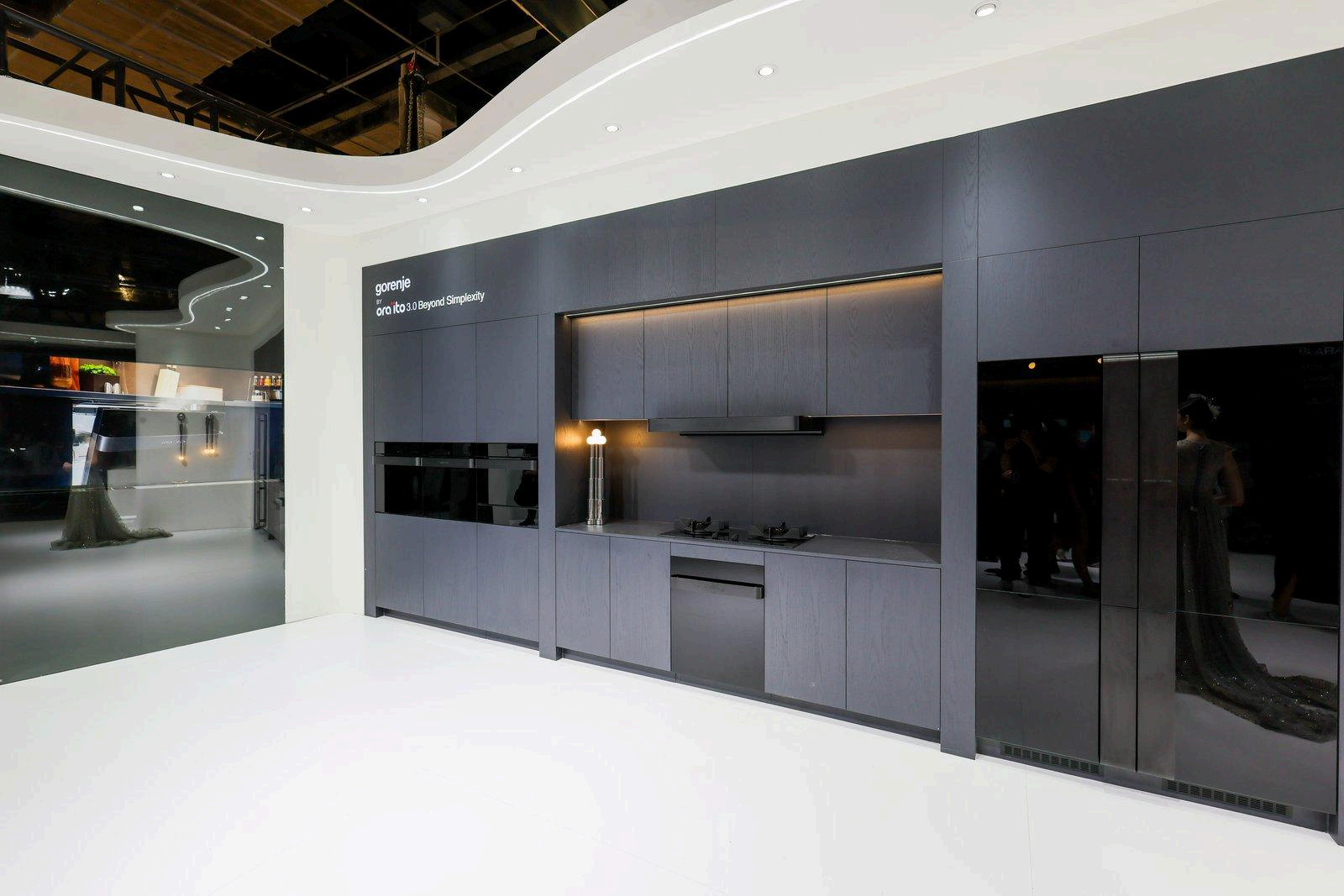
Gorenje (Slovenia) presented collections designed by Stark and Ora-Ïto, and Fisher & Paykel (New Zealand) showcased a curated selection of cabinets, wine coolers, and island units.
Villeroy & Boch (Germany) showcased new bathroom trends, positioning the space as “a retreat in troubled times.” The brand focused on three key styles: Warm Minimalism, Quiet Luxury, and Playfulness. Kohler (China) presented its immersive “Modern House” experience, and LAUFEN (Switzerland) transformed bathrooms into galleries with its Colour Archaeology exhibition.
Presenting for the first time in Asia, antoniolupi (Italy) unveiled a poetic collection and launched Breezew Onice, a special edition for China. The freestanding sink in Cristalmood, a resin that is manually poured into molds, is entirely handmade.
LAUFEN (Switzerland) introduced a new 12-colour ceramic palette developed in collaboration with Roberto Sironi Studio. Presented through the exhibition Colour Archaeology, the project explored the fields of art, design, archaeology, and colour history, spanning ancient ceramic cultures from 3000 BC to 1500 AD.
Living & Lifestyle Design
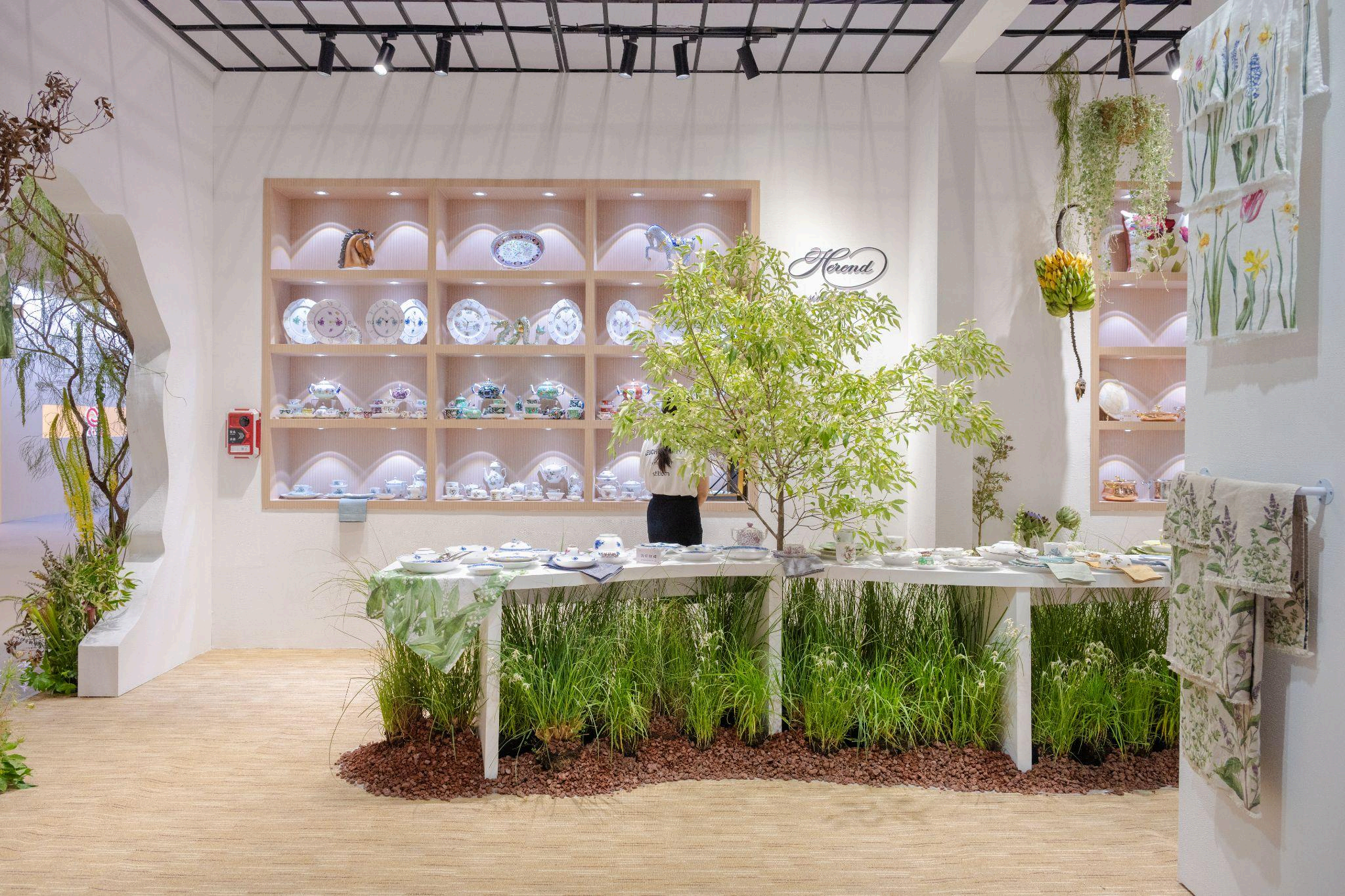
Living & Lifestyle Design section showcased exquisite craftsmanship, featuring brands like Aynsley (UK), Pro-Ject (Austria), and Vilca (Italy), as well as luxury design brands which specialise in fine porcelain, glassware, tableware, and high end home accessories, including Herend (Hungary), Lomonosov (Russia), Sabre Paris (France), Cutipol (Portugal), La Rochere (France), Sezzatini (Italy), Timon Luxury (Italy), and CreArt (Italy).
Reflecting the overall theme of “Design for Humanity”, the Living & Lifestyle section emphasized designs that are not only aesthetically pleasing but also emotionally intelligent and connected to human wellbeing. This approach made the exhibition more personal and meaningful, inviting visitors to consider how design impacts everyday life and human experience.
